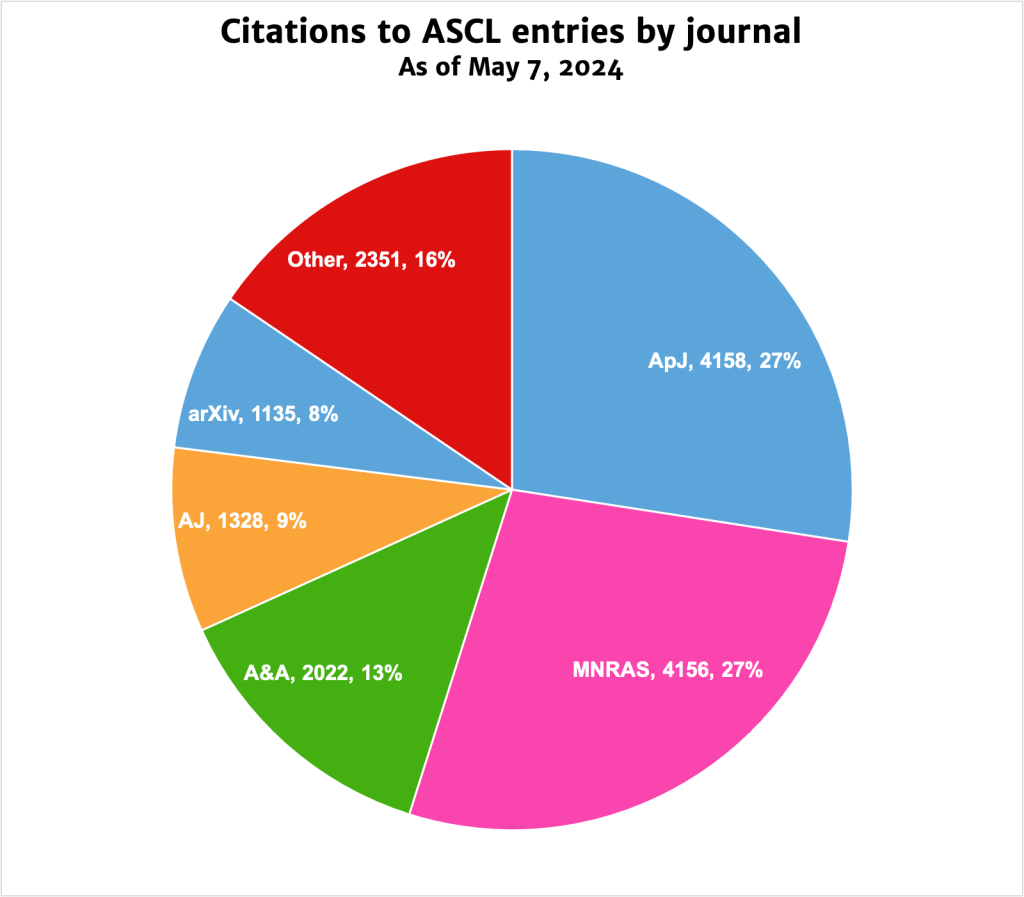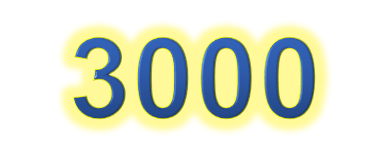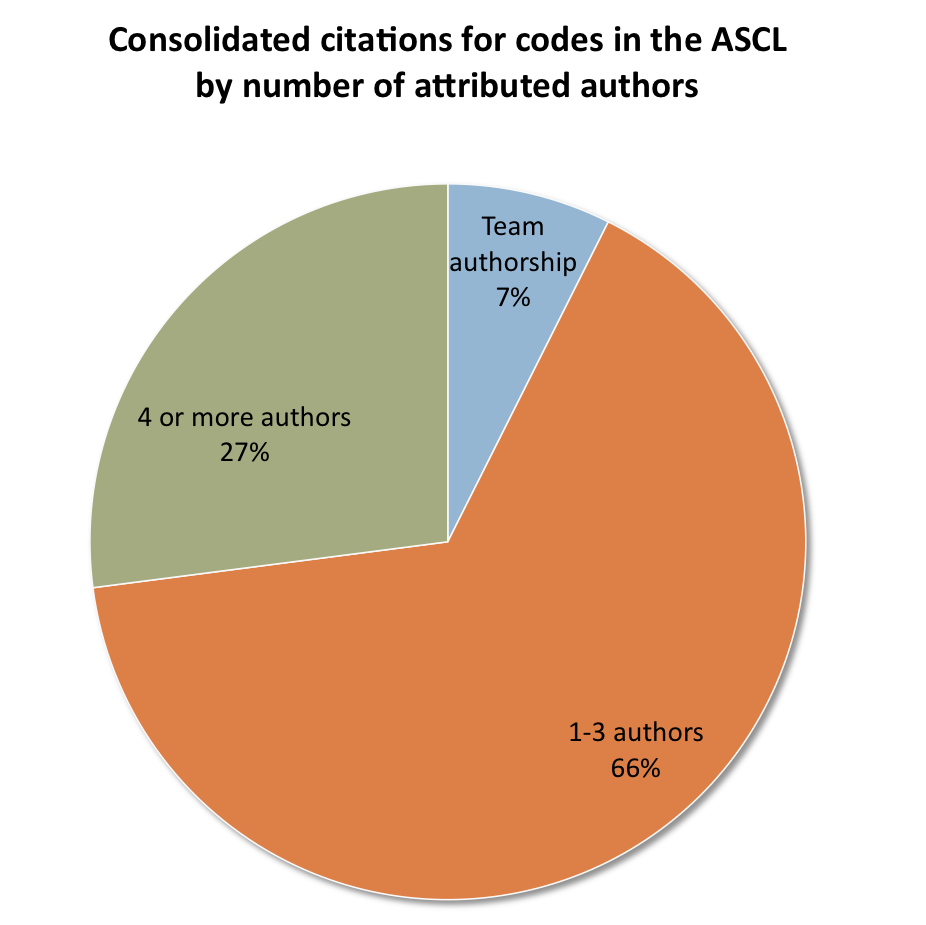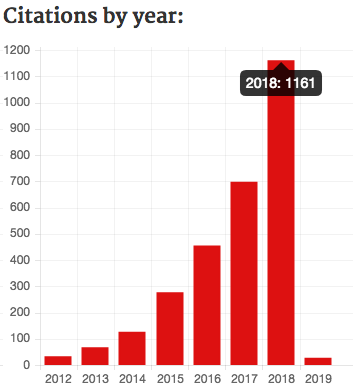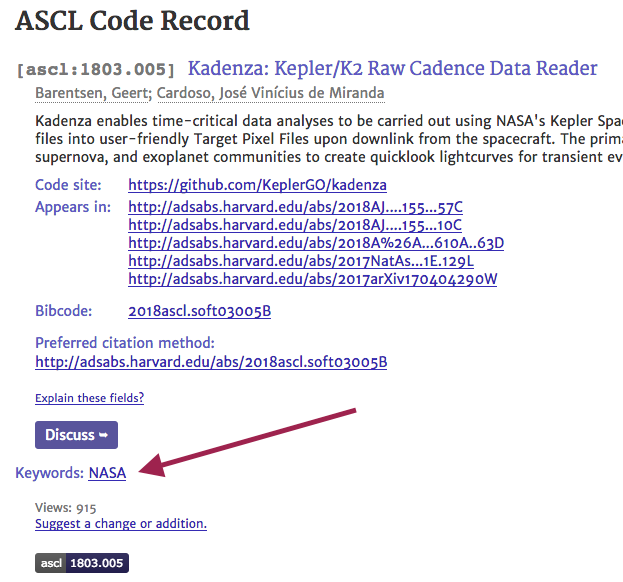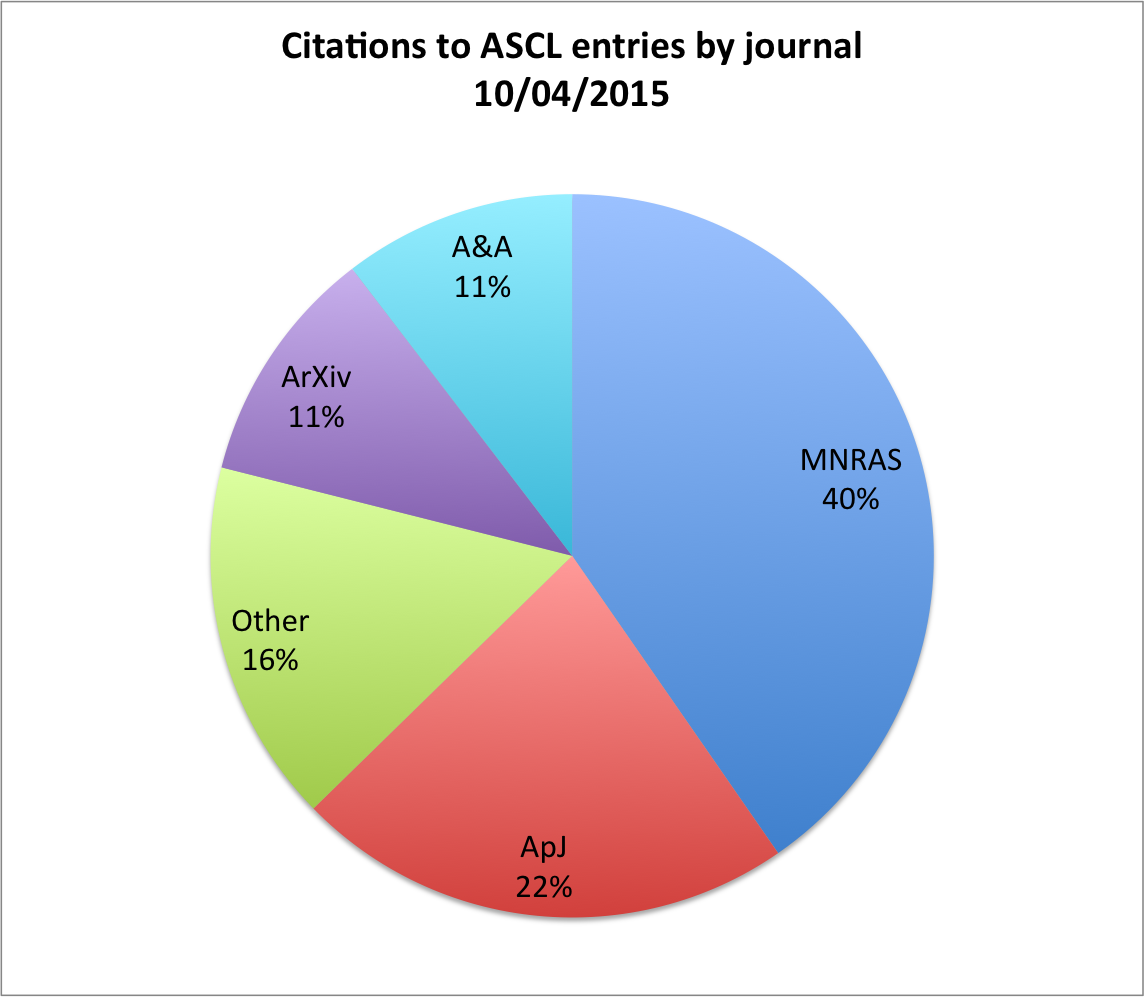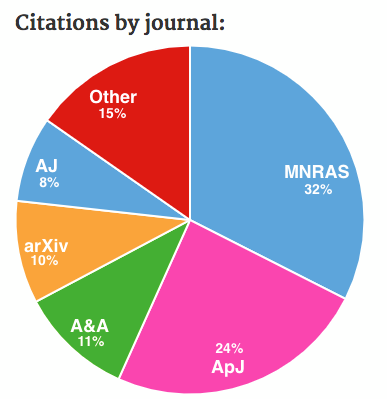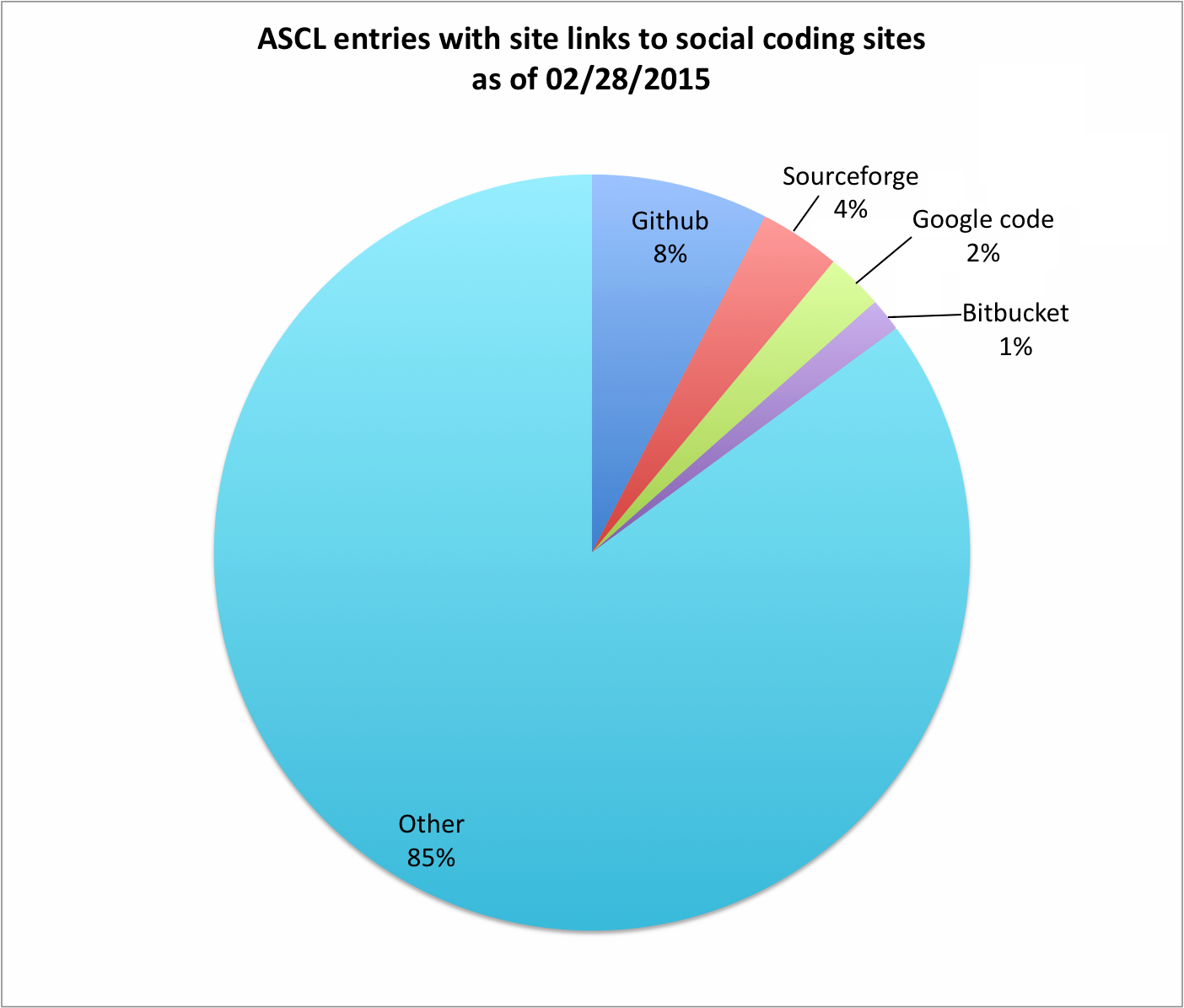In looking at the ASCL dashboard yesterday, I realized that the Astrophysical Journal (ApJ) now has the most citations to ASCL entries, having overtaken (by a hair) Monthly Notices of the Royal Astronomical Society (MNRAS), which has held the top spot since at least 2015. MNRAS‘s early (and enduring) lead in software citations was initially the result of one editor, Dr. Keith T. Smith (now a senior editor at Science), who strongly encouraged article authors to cite the software they had used to generate their results. (Though I obviously saw the effect of his work in MNRAS, I had no idea one person was responsible for it until I saw a post in the Astronomers Facebook group and later queried Keith, who was unknown to me at the time.)
AAS Journals, which publishes ApJ, has three data editors, Greg Schwarz, August Muench, and Katie Merrell, who, though primarily consumed with data work, also encourage software citation, obviously to good effect. And so it grows!
